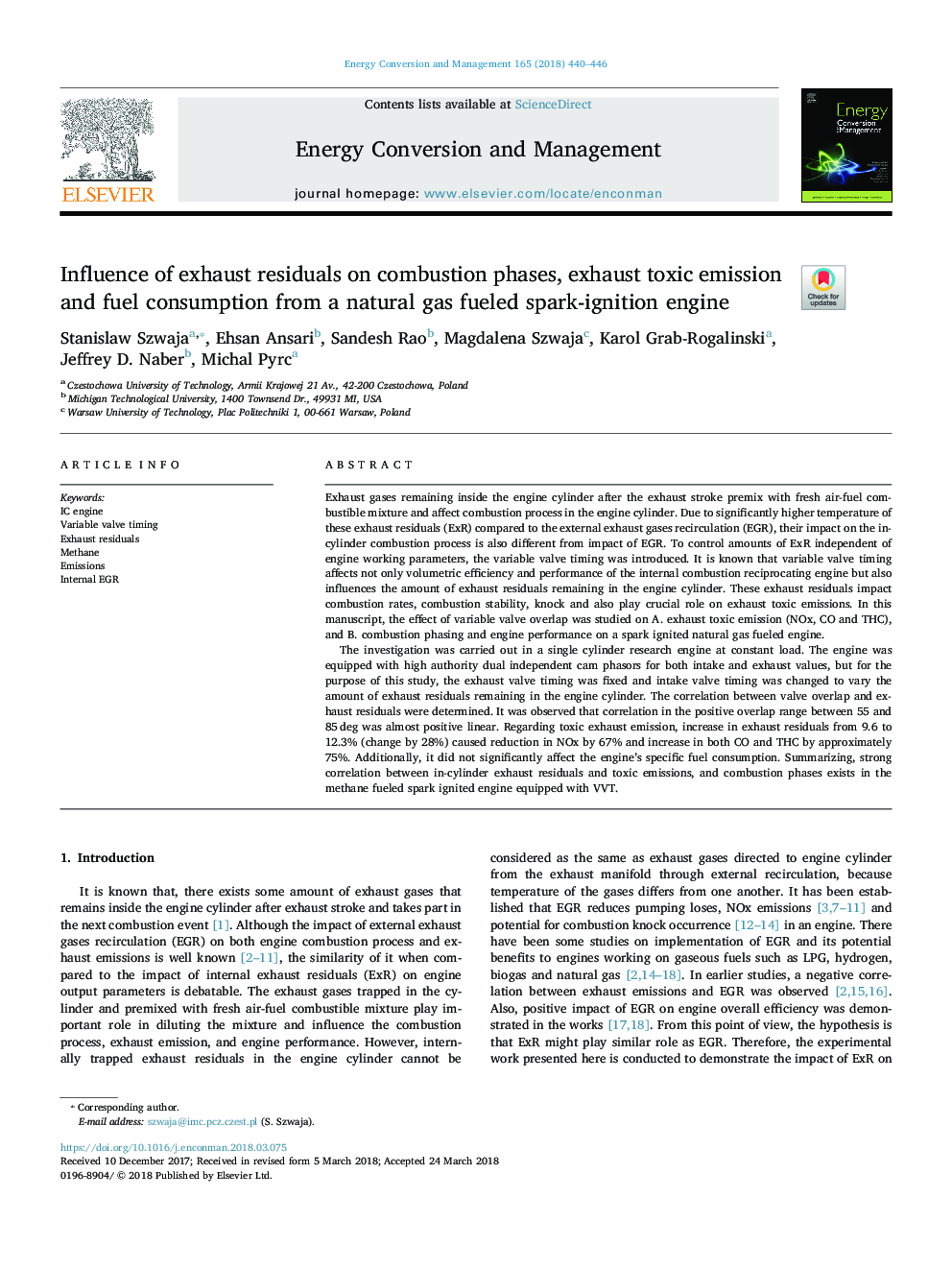| Article ID | Journal | Published Year | Pages | File Type |
|---|---|---|---|---|
| 7158623 | Energy Conversion and Management | 2018 | 7 Pages |
Abstract
The investigation was carried out in a single cylinder research engine at constant load. The engine was equipped with high authority dual independent cam phasors for both intake and exhaust values, but for the purpose of this study, the exhaust valve timing was fixed and intake valve timing was changed to vary the amount of exhaust residuals remaining in the engine cylinder. The correlation between valve overlap and exhaust residuals were determined. It was observed that correlation in the positive overlap range between 55 and 85â¯deg was almost positive linear. Regarding toxic exhaust emission, increase in exhaust residuals from 9.6 to 12.3% (change by 28%) caused reduction in NOx by 67% and increase in both CO and THC by approximately 75%. Additionally, it did not significantly affect the engine's specific fuel consumption. Summarizing, strong correlation between in-cylinder exhaust residuals and toxic emissions, and combustion phases exists in the methane fueled spark ignited engine equipped with VVT.
Related Topics
Physical Sciences and Engineering
Energy
Energy (General)
Authors
Stanislaw Szwaja, Ehsan Ansari, Sandesh Rao, Magdalena Szwaja, Karol Grab-Rogalinski, Jeffrey D. Naber, Michal Pyrc,
